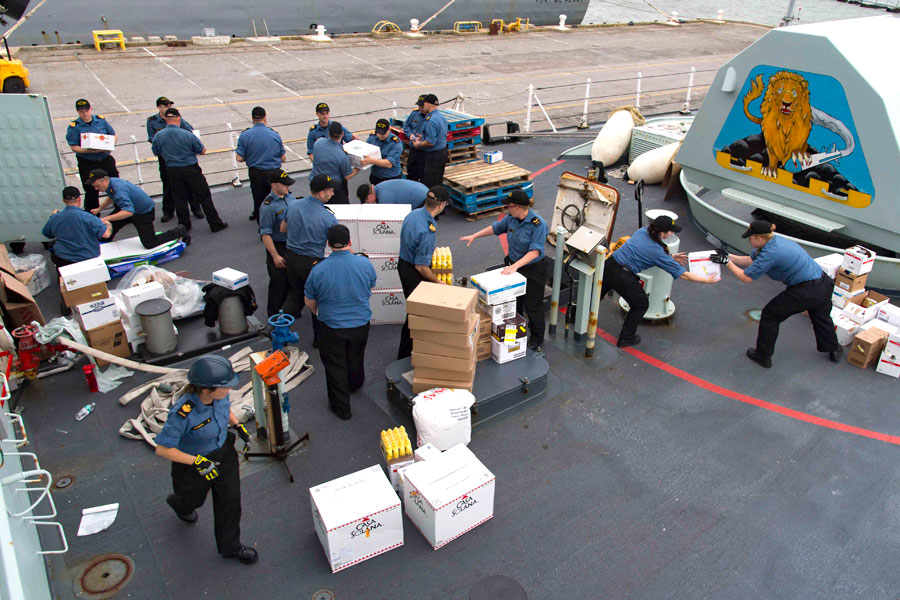HMCS St. John’s brings humanitarian relief
By Lookout on Oct 12, 2017 with Comments 0

Crew members from HMCS St. John’s receive supplies at Norfolk Naval Base in West Virginia before departing on Operation Renaissance. Photo by MCpl Chris Ringius, Formation Imaging Services Halifax
Captain Matt Zalot, Public Affairs ~
One of the roles of the Canadian Armed Forces (CAF) is to help people in the wake of disasters. Whether these disasters are caused by humans or nature, alleviating suffering is an important military function that can bring about stability, save lives, and prevent further misery.
That is why it’s unsurprising that the Government of Canada sent HMCS St. John’s to respond to the devastation wrought by Hurricane Irma when it passed through the Caribbean in early September.
The tropical cyclone, which affected many of the Leeward Islands and the United States, was the strongest Atlantic hurricane since Hurricane Wilma in 2005. The crew of St. John’s had its work cut out, and quickly stepped up the pace of their training in order to meet the required benchmarks before transiting south to the Turks and Caicos.
The ship arrived in South Caicos on Sept. 15 and the crew quickly began performing important humanitarian aid and disaster relief. The main lines of effort were directed at clearing debris, providing fresh water to the island, and providing work parties with the technical expertise to re-establish power and otherwise help out as needed.
The leadership of St. John’s liaised with United Kingdom military representatives, disaster response personnel, and local South Caicos officials to determine how best to coordinate disaster response efforts.
St. John’s served as a valuable command centre, permitting calls to higher command, producing lifesaving water, and providing a home for work parties after they returned from labouring in the hot and humid Caribbean climate. Every day, approximately 80 sailors transferred via small boat back and forth to shore in order to conduct the humanitarian tasks assigned to them.
Operation Renaissance Irma Maria efforts in South Caicos were not confined to the navy. Members of 423 Maritime Helicopter Squadron, based out of 12 Wing Shearwater, Nova Scotia, played an invaluable role in ensuring that the island was adequately supplied using the ship’s CH-124 Sea King helicopter. Along with scouting the area and transporting officials across the region, the RCAF personnel on board were responsible for slinging thousands of litres of potable water to shore to provide emergency relief while the distribution system could be repaired. Once the water situation improved, the Sea King continued to play an important role, making sure that the work parties’ equipment was where it needed to be to maximize their effectiveness.
Following Hurricane Maria, St. John’s transited from the Turks and Caicos to Dominica to help with relief work on the island.
Filed Under: Top Stories
About the Author:





